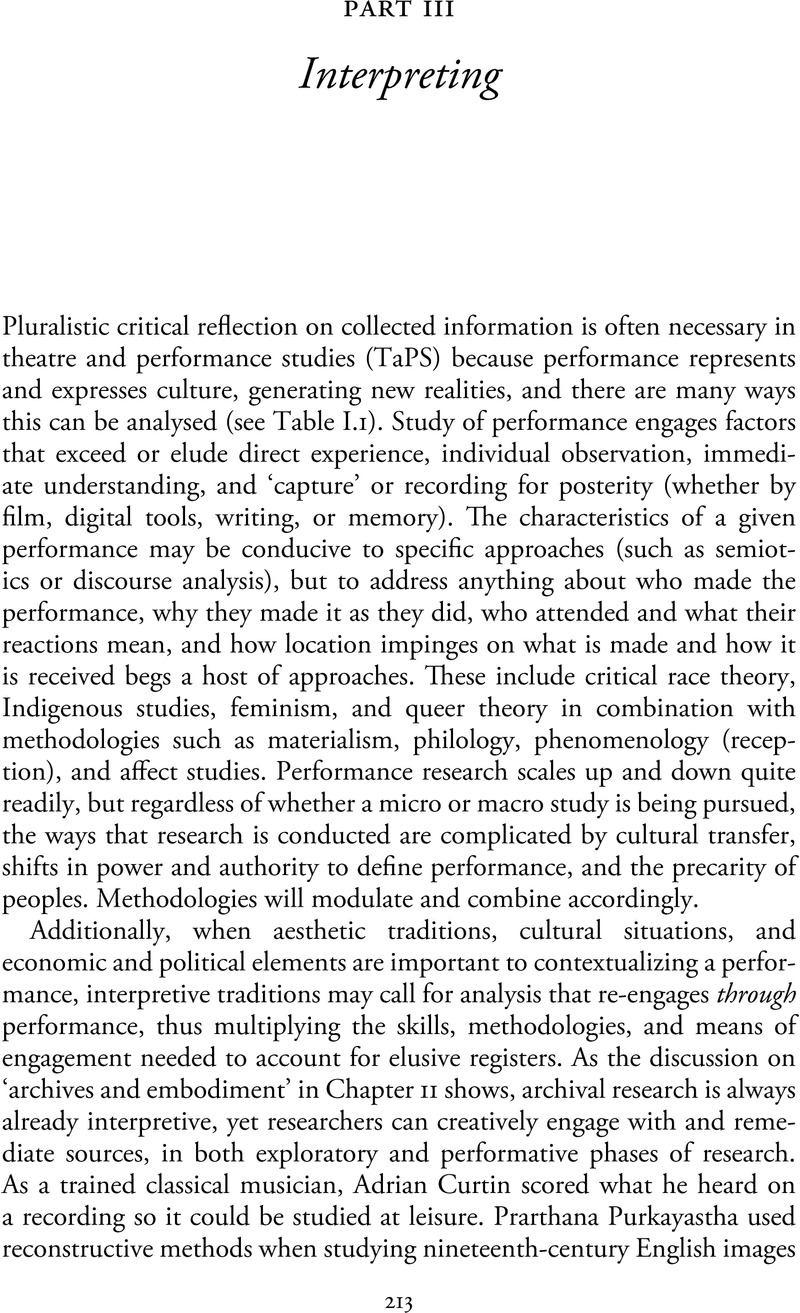Book contents
- The Cambridge Guide to Mixed Methods Research for Theatre and Performance Studies
- Reviews
- The Cambridge Guide to Mixed Methods Research for Theatre and Performance Studies
- Copyright page
- Contents
- Figures
- Tables
- Contributors
- Acknowledgements
- Introduction:
- Part I Planning
- Part II Doing
- Part III Interpreting
- Index
- References
Part III - Interpreting
Published online by Cambridge University Press: 01 February 2024
- The Cambridge Guide to Mixed Methods Research for Theatre and Performance Studies
- Reviews
- The Cambridge Guide to Mixed Methods Research for Theatre and Performance Studies
- Copyright page
- Contents
- Figures
- Tables
- Contributors
- Acknowledgements
- Introduction:
- Part I Planning
- Part II Doing
- Part III Interpreting
- Index
- References
Summary

- Type
- Chapter
- Information
- Publisher: Cambridge University PressPrint publication year: 2024

